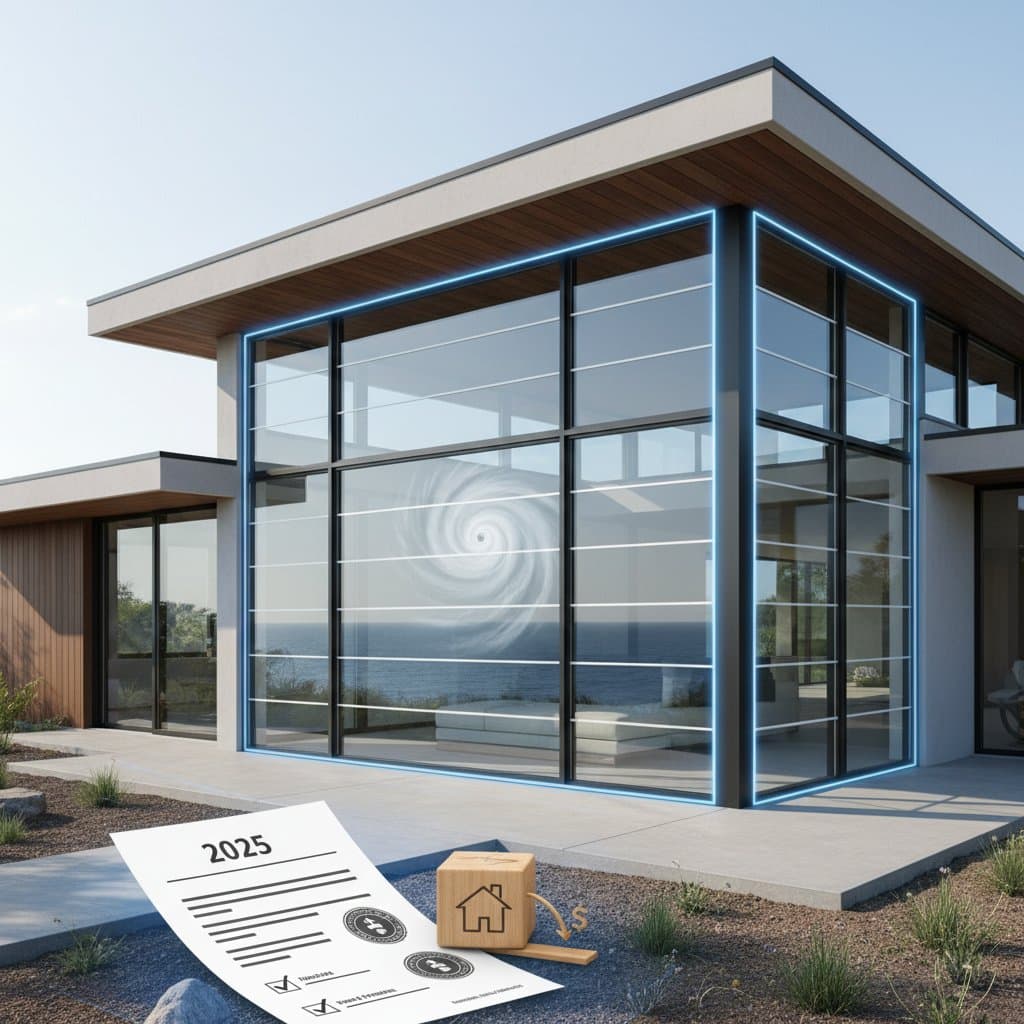2025 Insurance Mandates: Why Impact Windows Are Now Required
Homeowners in coastal and hurricane-vulnerable regions face a significant shift in insurance policies starting in 2025. Major insurers plan to condition coverage renewals and new policies on the installation of certified impact-resistant windows. This requirement stems from rising storm frequencies and escalating claim costs, aiming to mitigate financial risks for both policyholders and providers.
These mandates extend beyond mere regulatory hurdles. They promote structural integrity and financial prudence. Property owners who comply early position themselves to avoid coverage gaps and capitalize on emerging incentives.
Understanding Impact Windows and Their Core Features
Impact windows resemble standard varieties in appearance but incorporate advanced engineering for extreme conditions. The primary component involves laminated glass, where two or more layers bond to a flexible polyvinyl butyral interlayer. This design ensures that, upon impact from flying debris, the glass cracks yet remains adhered, preventing shards from scattering.
Frames receive reinforcement with materials such as aluminum or vinyl alloys, engineered to resist wind forces exceeding 150 miles per hour. Testing protocols from organizations like the Miami-Dade County standards or ASTM International verify performance. Only windows passing these rigorous evaluations qualify for insurance endorsements.
To select appropriate options, prioritize products labeled with Large Missile Impact ratings. These simulate real-world threats, such as a 9-pound object propelled at 50 feet per second. Retain certification documents from suppliers, as they serve as essential proof during insurance audits.
Insurance Benefits: Lower Premiums and Fewer Claims
Adopting impact windows directly influences insurance outcomes in positive ways. Insurers classify properties with these installations as lower risk, often resulting in premium reductions of 10 to 30 percent, depending on location and carrier. For instance, in Florida, compliant homes may qualify for wind mitigation credits that substantially offset annual costs.
Beyond discounts, these windows curb claim frequency by containing damage during storms. Traditional glass shatters easily, leading to water intrusion and interior devastation that amplifies repair expenses. Laminated designs minimize such vulnerabilities, preserving structural elements and reducing overall liability.
Homeowners should request a wind mitigation inspection post-installation. This professional assessment generates a report that insurers use to apply credits. Early action ensures immediate savings and strengthens future negotiations with providers.
Managing Upgrade Costs and Accessing Incentives
Initial investments in impact windows range from 500 to 1,200 dollars per unit, influenced by size, style, and customization. Full-home replacements for a typical three-bedroom residence might total 15,000 to 30,000 dollars. However, various financing avenues alleviate this burden.
Federal and state programs offer rebates or low-interest loans for energy-efficient and disaster-resilient upgrades. In storm-prone states, initiatives like the Florida Hurricane Loss Mitigation Program provide grants up to 10,000 dollars. Local utilities frequently subsidize installations that enhance insulation, yielding dual benefits in storm resistance and utility bill reductions.
Compare bids from at least three certified contractors to secure competitive pricing. Factor in long-term returns, such as 20 to 30 percent energy savings from improved thermal performance. These elements transform the expense into a strategic investment.
Aligning with Updated Building Codes
Insurance requirements align closely with evolving building regulations designed to bolster community resilience. Jurisdictions in hurricane alleys now enforce impact-rated windows or equivalent protections for all new builds and substantial remodels. Non-compliance risks permit denials, inspection failures, or diminished resale value.
Codes specify minimum performance levels, often referencing the International Building Code or regional variants. For example, Texas coastal counties mandate windows tested to withstand Category 5 winds. Existing structures gain exemptions in some areas if upgrades occur voluntarily before deadlines.
Consult your municipal building authority at the outset of any project. Submit material specifications alongside permit applications to confirm adherence. Engage contractors versed in these protocols to streamline approvals and avert delays.
Steering Clear of Upgrade Errors
Homeowners frequently overlook distinctions between storm-resistant products, selecting options that meet only partial criteria. Wind-only rated windows falter against debris, voiding insurance benefits. Similarly, inadequate documentation undermines claims of compliance during policy reviews.
Installation flaws pose another hazard. Poor anchoring or sealing compromises performance, as evidenced by post-storm failures where windows dislodged despite quality materials. Rushed work often stems from unqualified crews lacking specialized training.
Mitigate risks by verifying installer credentials through state licensing boards. Demand detailed warranties covering both products and labor for at least 10 years. Conduct a walkthrough inspection prior to finalizing payments, documenting all aspects with photographs and reports.
Building Lasting Protection for Your Property
Embracing impact windows equips your home against intensifying weather threats while aligning with forward-thinking insurance frameworks. These enhancements deliver tangible gains in security, efficiency, and economic value. Property appraisals often reflect premiums of 5 to 10 percent higher for fortified residences.
Initiate the process with a professional evaluation of existing setups. Solicit detailed proposals from vetted experts and align timelines with seasonal incentives. Upon completion, your investment fosters not only regulatory peace but enduring confidence in your shelter's durability.
